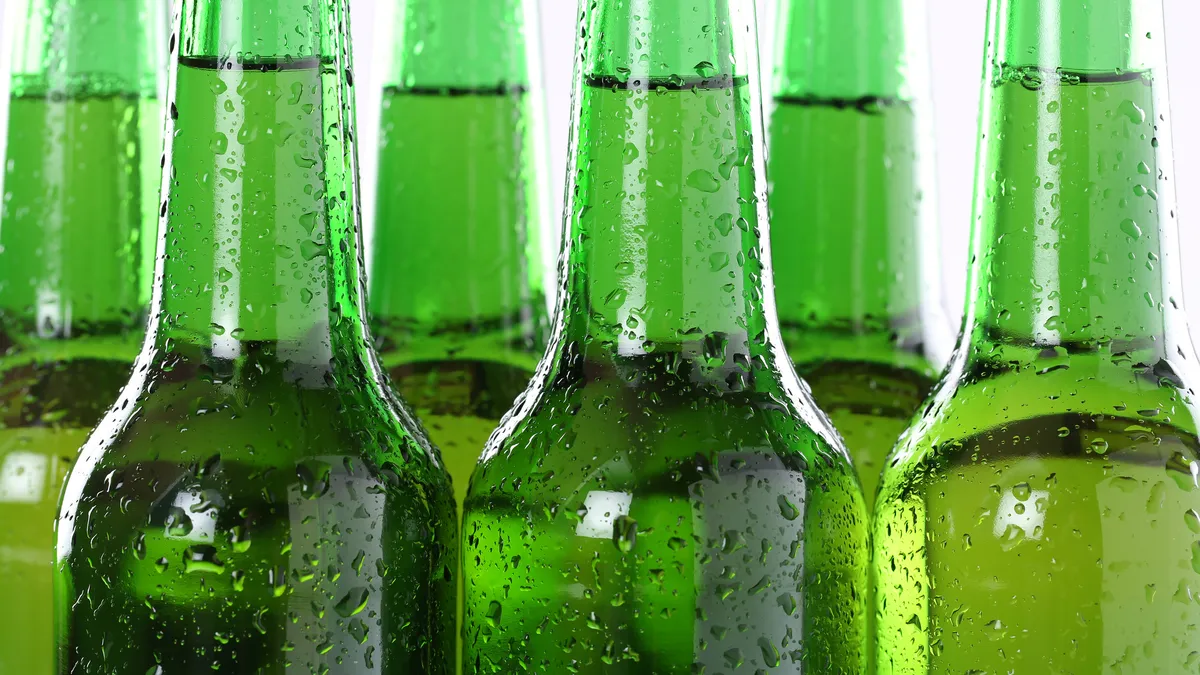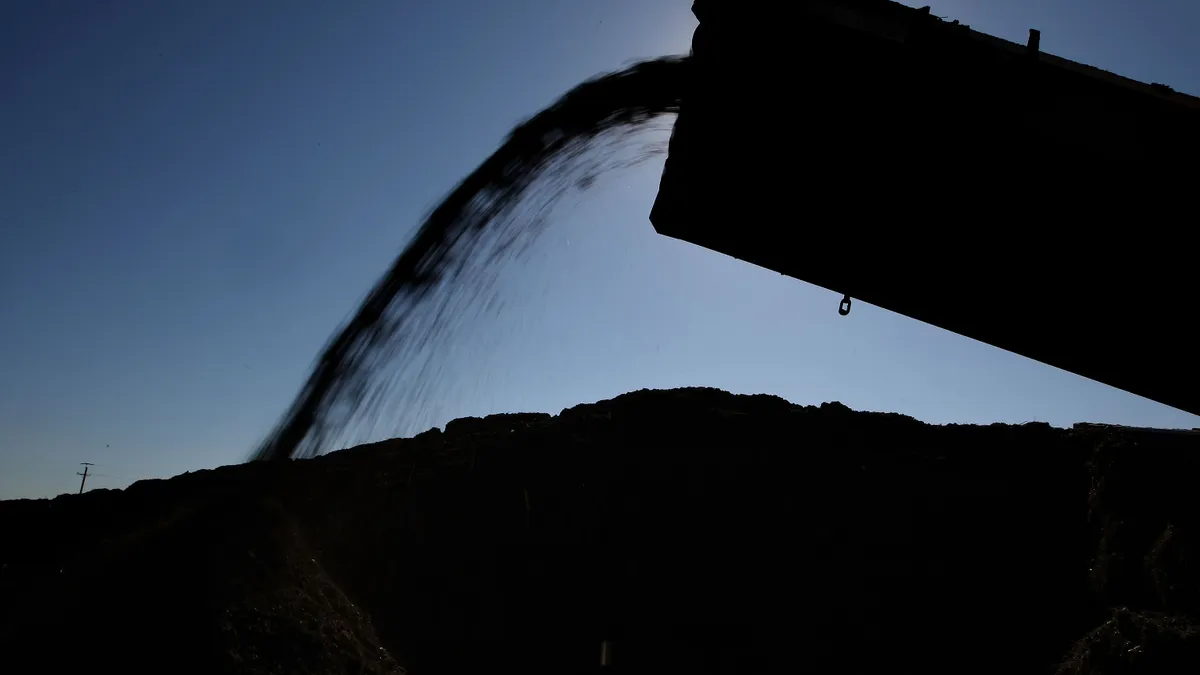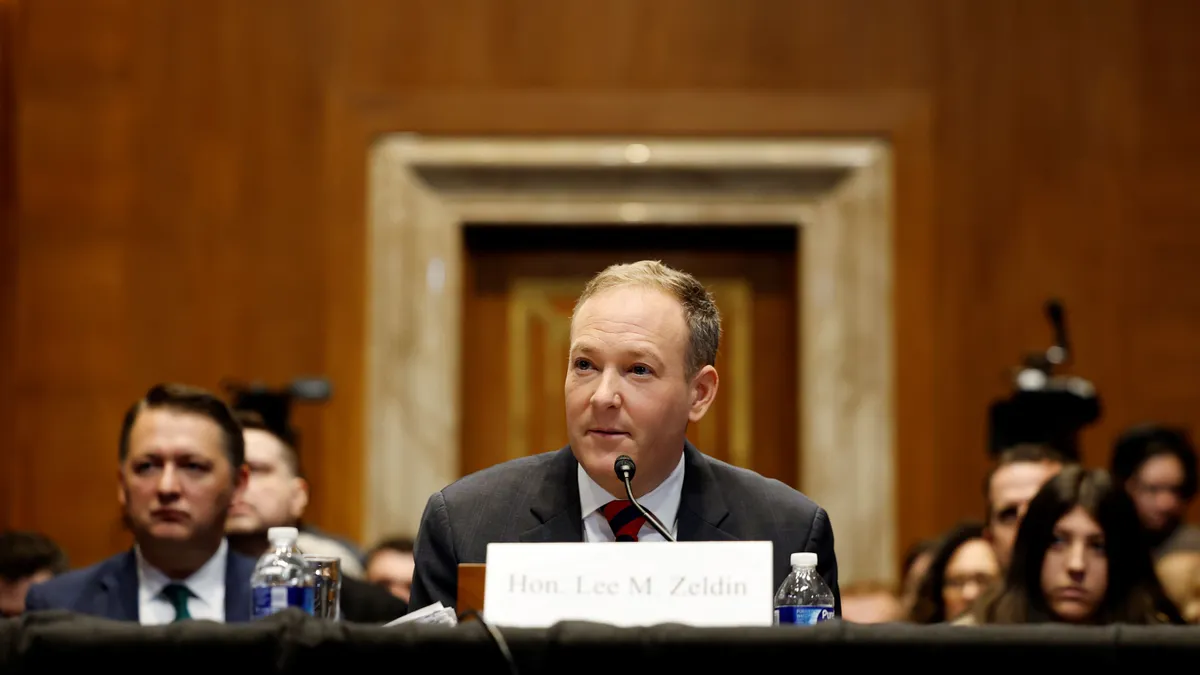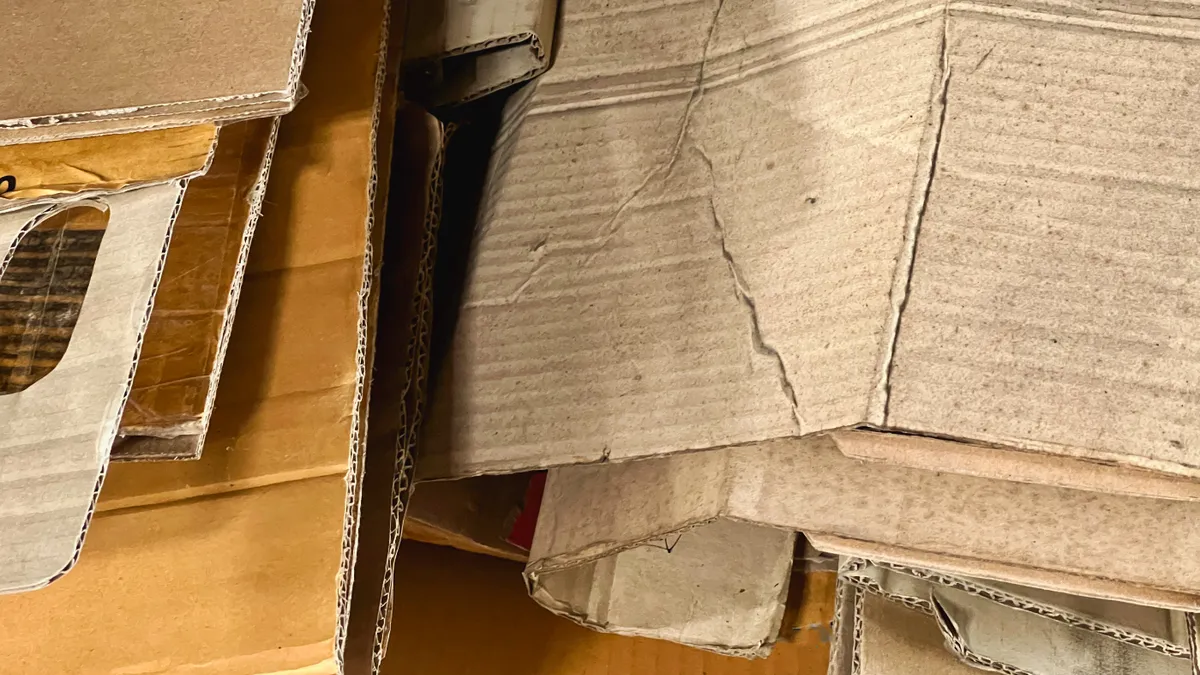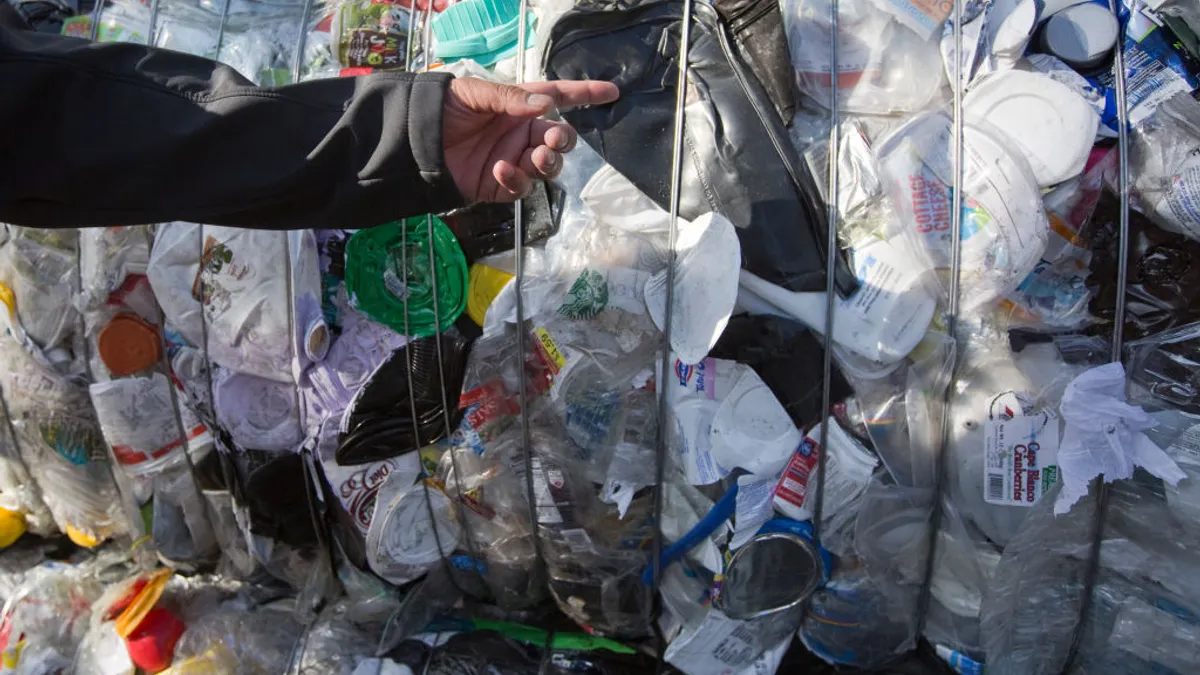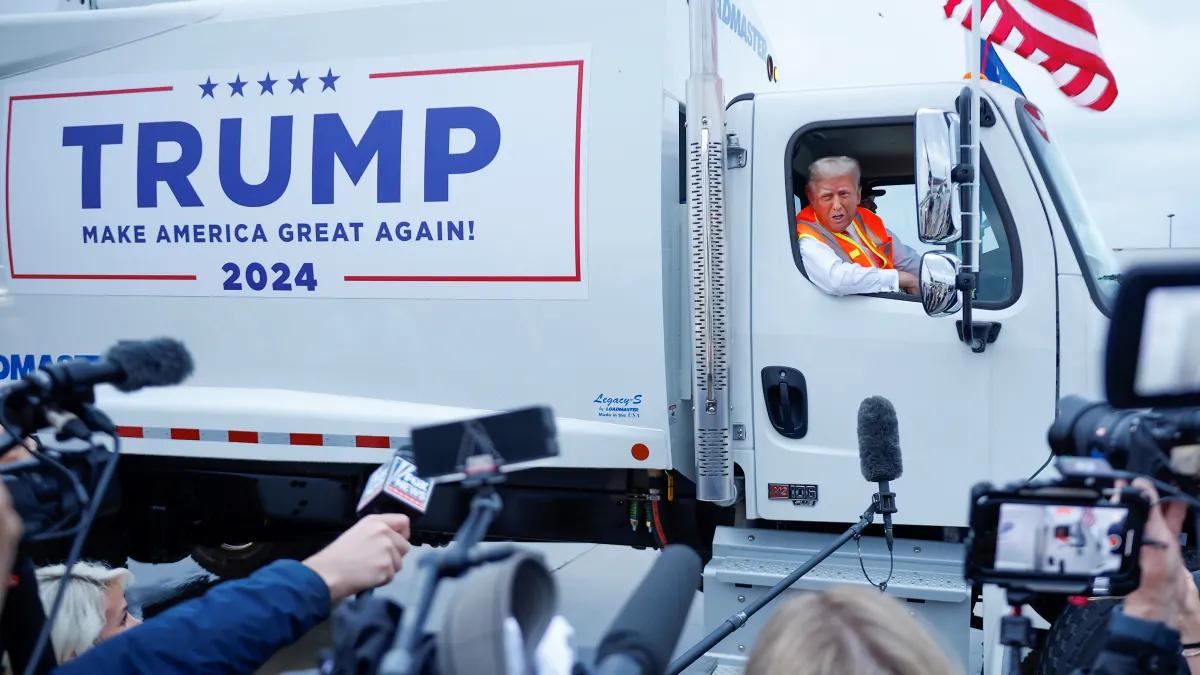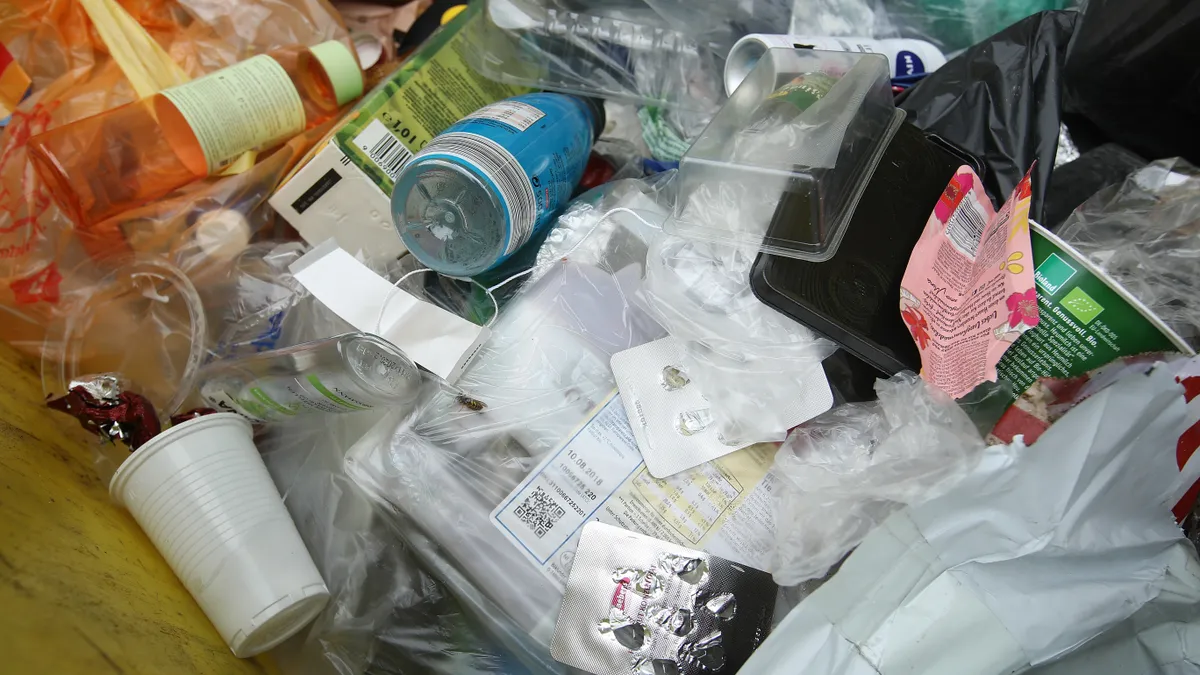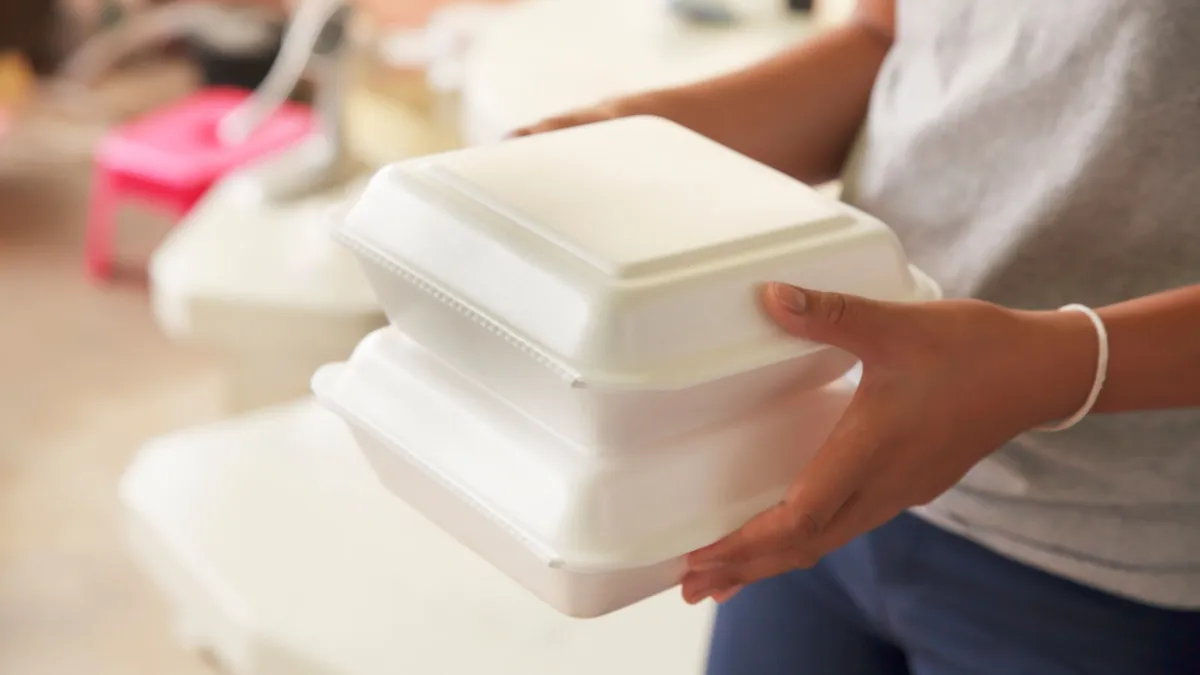Wash-off and pressure-sensitive labels that can be easily peeled away are gaining attention as a way to make containers more readily recyclable and help brands meet the needs of current or upcoming packaging regulations.
Marika Knorr, head of sustainability and communication at CCL Label, recently demoed a wash-off label at this year’s Interpack in Düsseldorf. CCL has offered wash-off versions of its labels since at least 2008, with growing adoption by Heineken and other brands. The product was developed to work in big bottlers’ professional washing facilities, and it separates cleanly from the glass beer bottle when immersed in hot water. The label’s ink is between two layers, printed using a special technique, which ensures that it doesn’t mix with the wash water.
“It’s very important that the label comes off quickly and effectively, that it doesn’t bleed into the water, that no adhesive gets into the water. So, everything should remain on the label,” said Knorr. Fever-Tree, a producer of premium drink mixers, and Desperados, a tequila -flavored beer, are among the other brands using CCL’s wash-off labels.
Labels that are hard to separate from glass, plastic, aluminum or other materials can impact the recyclability or reusability of a container, frustrating broader goals to keep materials in use. While wash-off labels may currently come at a slighter higher cost than conventional labels, some sources consider them a worthwhile investment for brands who want to show commitment to the easy recycling or reuse of their packaging.
For glass reuse to become ubiquitous, sources say wash-off labels will be a huge step forward. “An easy-to-remove label obviously lends itself to standardization,” said Sydney Harris, policy director at Upstream, an organization focused on encouraging businesses and consumers to reimagine packaging as a service rather than a product.
It isn’t just glass that has applications for reuse. Dan Riendeau, strategic business unit manager for packaging at plastics manufacturer FLEXcon, believes that wash-off labels need to become the standard for PET containers in order to boost their recyclability.
“As more and more brands commit to the Plastic Pact and the Ellen MacArthur Foundation, there will be requirements to make 100% of their plastic packaging reusable, recyclable, or compostable by 2025,” he said via email.
And while brands frequently use packaging to differentiate themselves, groups such as Upstream believe reducing overall material consumption is more important than marketing considerations. Harris pointed out that this can hurt the potential for reuse and she doesn’t think that consumers ultimately care that much about the specifics of the container. “Customers really just want the product that’s inside the packaging,” she said.

FLEXcon’s wash-off products are used for items including juice, body lotion and makeup containers. When a product that has a label utilizing FLEXcon’s V-52RE adhesive is recycled, it is shredded and chopped into small pieces at a PET reclaimer site. The container pieces receive a warm caustic water bath. “The labels wash off and float to the top while the container pieces sink,” said Riendeau. “The container pieces then start their journey to becoming a new container, free from adhesive and label materials.”
CCL Label also has products for plastics, including shrink sleeves for PET bottles. Up until now, many shrink sleeves for PET bottles had been made from PETG: a form of PET with glycol. “That’s not ideal,” Knorr said, due to the recycling process.
When the bottle gets ground up into flakes, these go into an area similar to a big swimming pool. “There you have the density separation happening,” said Knorr. Ideally, PET should sink to the bottom, and everything else should float, but PETG has the same density as PET. The sleeve, which contains ink, can then contaminate the PET bottle flakes.
“That’s why, now, everybody is switching to a polyolefin shrink sleeve, because they float,” she said. “Polyolefin material has been around for a while, but it never was thin enough.” Knorr explained that it sometimes wouldn’t float when lots of ink was piled on top, but now there are thinner polyolefin sleeves which can be printed with any design and still float.
Kristina Hansen, president of Plastics Forming Enterprises, confirmed that labels have been an important topic of conversation for plastic reclaimers. They are looking for something that disconnects from the surface of the PET container and ideally stays with the label substrate instead of sticking to the bottle. PFE works closely with the Association of Plastic Recyclers on protocols and design requirements, and reclaimers come to the table to confirm what they can and can’t accept.
Knorr said the labels can come with a higher cost because CCL has its own inline coating technology, which is considered more advanced than other options, "but not to a degree where nobody can afford it." Hansen points out that with extended producer responsibility regulations for packaging gaining traction, it’s important for responsibilities to be shared across the full value chain in order to design for recyclability.
Riendeau believes the question should be: What is the cost of failing to transition to wash-off labels? “The label often covers a significant portion of the container, so the use of traditional label materials typically results in the container being either downcycled or put in the landfill,” he said. “As consumers continue to demand reductions in plastics usage and better recyclability, transitioning to a wash-off product for PET containers will become necessary.”
To achieve this shift, good internal communication within large brands — from the head of sustainability through to the designer that’s scoping that package — will be critical. “It is getting better,” Hansen said, adding that brands that want to ensure that plastics are recycled back into new products should be making decisions that support ease of recycling. “They have to recognize that their choices are going to be their problems later.”


